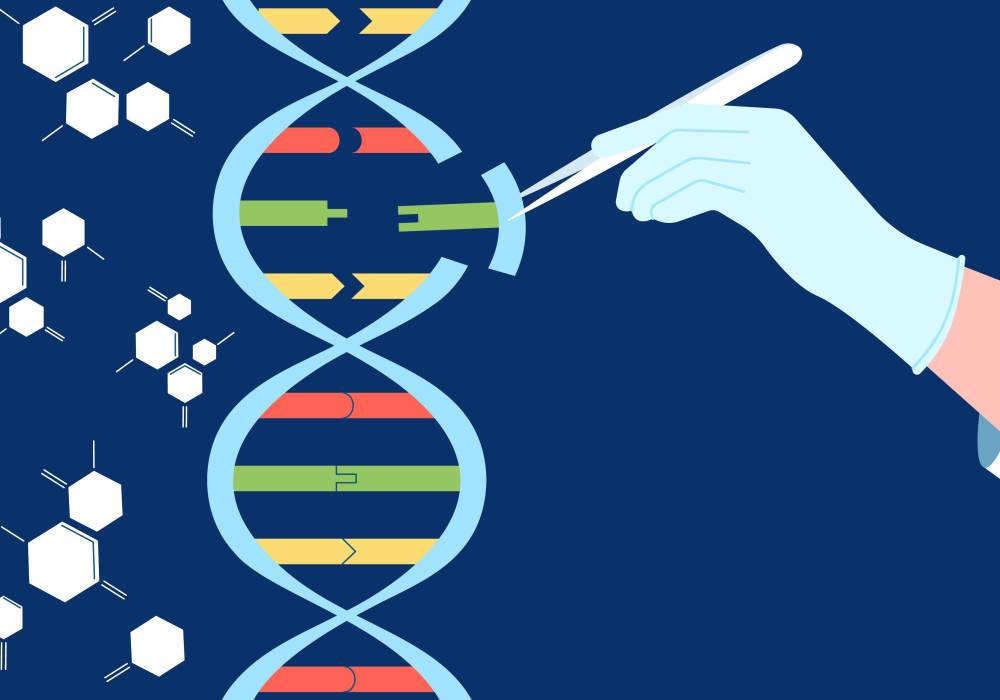CRISPR and Genome Editing: A Revolution in Genetics
20-Sep-2024

CRISPR technology has rapidly transformed the world of genetics, bringing the once distant dream of precise genome editing into reality. From curing genetic diseases to developing pest-resistant crops, CRISPR holds immense promise for healthcare, agriculture, and beyond. But what exactly is CRISPR, and how is it changing our world? Let’s dive into the science behind this groundbreaking tool and explore its potential impact.
What is CRISPR?
CRISPR (Clustered Regularly Interspaced Short Palindromic Repeats) is a naturally occurring system found in bacteria. It functions as part of a defense mechanism that bacteria use to protect themselves from viruses. When a virus attacks, the bacteria capture snippets of the virus's DNA and insert them into their own genome, storing it as a memory. If the virus invades again, the bacteria use the stored genetic information to recognize and cut the virus’s DNA, effectively neutralizing the threat.
Scientists have harnessed this mechanism, particularly the CRISPR-Cas9 system, to develop a powerful tool for editing genomes in a precise and efficient manner. Cas9 is an enzyme that acts as molecular scissors, cutting DNA at specific locations, allowing scientists to either disable or modify targeted genes.
How Does CRISPR-Cas9 Work?
The CRISPR-Cas9 system is composed of two key components: the Cas9 enzyme and a guide RNA (gRNA). The gRNA is designed to match the sequence of DNA that scientists want to edit. Here’s how it works:
Designing the Guide RNA: The first step involves creating a guide RNA that matches the DNA sequence at the site of interest. This gRNA directs Cas9 to the precise location where the cut is to be made.
Cutting the DNA: Once Cas9 is guided to the correct spot, it acts like a pair of molecular scissors, cutting both strands of the DNA at the target site.
Repair and Editing: After the DNA is cut, the cell’s natural repair mechanisms kick in. At this point, scientists can introduce new genetic material (to correct or replace a faulty gene) or allow the cell to repair itself, sometimes resulting in the disruption of the targeted gene’s function.
Applications of CRISPR and Genome Editing
CRISPR’s ability to target and modify specific genes has far-reaching applications across various fields. Here are some of the most transformative uses of this technology:
Curing Genetic Diseases: One of the most promising applications of CRISPR is its potential to treat genetic disorders. Diseases such as sickle cell anemia, cystic fibrosis, and muscular dystrophy are caused by mutations in a single gene. CRISPR offers a way to directly correct these mutations at the DNA level, potentially providing a permanent cure. Clinical trials for CRISPR-based therapies are already underway, showing promising early results.
Cancer Treatment: CRISPR is also being explored as a tool for enhancing cancer therapies. Scientists are using it to engineer immune cells that can better recognize and attack cancer cells. This approach, known as CRISPR-CAR-T therapy, holds potential for treating aggressive cancers that have been resistant to conventional treatments.
Agriculture and Food Security: In agriculture, CRISPR is being used to develop crops that are more resistant to pests, diseases, and extreme weather conditions. This can help increase food production and ensure crop stability in the face of climate change. For example, scientists are working on drought-resistant crops, improving nutritional content, and reducing the need for pesticides.
Animal Models for Research: CRISPR has revolutionized biomedical research by enabling scientists to create more accurate animal models of human diseases. These models are invaluable for studying diseases and testing potential treatments before they are used in humans.
Preventing Inherited Diseases: CRISPR has also opened the door to germline editing—modifying the DNA of embryos to prevent inherited genetic disorders. This application raises ethical questions, as changes made to an embryo’s DNA would be passed on to future generations, potentially altering the human gene pool.
